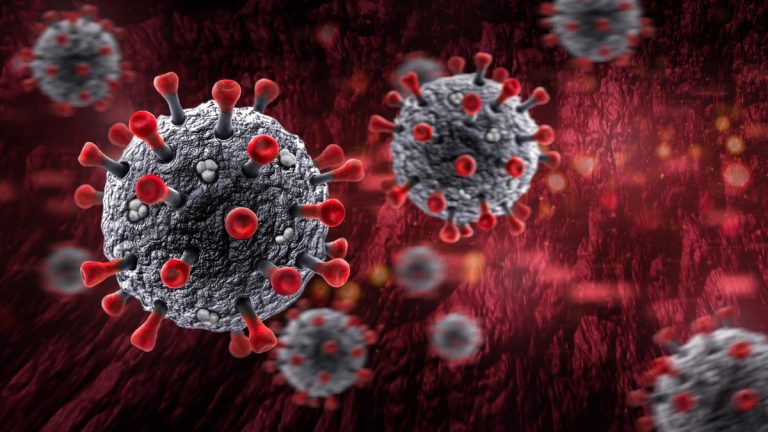Resurgence of COVID-19 in India: A Seasonal Fluctuation or Cause for Concern?
India has witnessed a recent uptick in COVID-19 cases, sparking public concern and media attention, reminiscent of the 2020-21 pandemic experience. This resurgence, mirroring trends observed in other regions like Singapore, Hong Kong, Thailand, and South Korea, has raised questions about the emergence of new variants and the potential severity of the situation. However, a closer examination of the epidemiological data reveals a more nuanced picture, suggesting that the current increase is likely a seasonal fluctuation rather than a harbinger of a new wave.
The dominant variant driving the current uptick is JN.1 (also known as Pirola), a descendant of the Omicron variant. First identified in August 2023, JN.1 has been circulating in India since late 2023. While sub-lineages of JN.1, such as LF.7 and NB.1.8, have emerged, they have not exhibited significant clinical differences from the parent variant. The absence of a novel variant of concern, coupled with the established presence of JN.1, points towards other factors contributing to the rise in cases.
Three key epidemiological factors explain the recent resurgence. Firstly, respiratory viruses, including SARS-CoV-2, often exhibit seasonal patterns. While the precise seasonality of COVID-19 is yet to be fully established in India, the observed upticks in early 2023, late 2023, mid-2024, and now in mid-2025 suggest a potential pattern of surges every eight to ten months. Importantly, these surges have been characterized by relatively low case numbers and mild clinical presentations.
Secondly, the inherent mutability of RNA viruses, like SARS-CoV-2, contributes to the emergence of new sub-lineages, which may play a role in the observed increase. While JN.1 remains the dominant variant, minor genetic variations within its sub-lineages could be influencing transmission dynamics.
Thirdly, enhanced surveillance and testing efforts, prompted by reports from neighboring countries, contribute to the detection of more cases. Increased testing inevitably leads to a higher number of positive results, even if the underlying prevalence remains relatively stable.
The presence of hybrid immunity, derived from both natural infections and vaccinations, raises the question of why infections are still occurring. While immunity does not preclude infection, it significantly reduces the risk of severe illness and hospitalization. The current uptick primarily reflects asymptomatic or mild cases, with minimal reports of severe outcomes. The immune response, primed by prior exposure to SARS-CoV-2, effectively prevents serious complications.
It is crucial to contextualize the current numbers. The reported 200-300 daily new cases translate to a remarkably low infection rate, affecting roughly one in every 4.5 to 7 million people. Hospitalizations and deaths remain negligible. In comparison, India reports thousands of new tuberculosis cases daily, with hundreds of deaths attributed to TB, influenza, and other respiratory illnesses. The disproportionate attention given to the relatively minor COVID-19 uptick underscores the lingering impact of the pandemic and the need for a more balanced perspective.
The continued use of the "active cases" metric contributes to an inflated perception of the situation. While relevant in the early stages of the pandemic, when infections were novel and immunity was scarce, this metric no longer accurately reflects the current epidemiological landscape. With widespread immunity, individuals typically clear the virus rapidly, rendering the "active cases" count misleading.
Furthermore, there is no scientific justification for additional COVID-19 vaccine doses at this time. The Indian population possesses widespread hybrid immunity, offering robust protection against severe illness. Focusing on vaccinations for other preventable diseases, such as influenza, holds greater public health significance.
The current COVID-19 uptick appears to be a seasonal fluctuation, driven by the established JN.1 variant and its sub-lineages. There is no evidence of a new variant of concern, and the reported cases predominantly represent mild infections. Maintaining vigilant surveillance and monitoring trends is prudent, but there is no cause for undue alarm. A rational, evidence-based approach, prioritizing accurate information and avoiding misinformation, is essential.
The response to future COVID-19 fluctuations must be proportionate and grounded in epidemiological reality. Overreacting to every minor increase risks straining healthcare resources and fostering public fatigue. The current evidence suggests that COVID-19 can now be managed like other mild respiratory illnesses, without resorting to drastic measures. A balanced approach, combining vigilance with a realistic assessment of the risks, will best serve public health interests.


